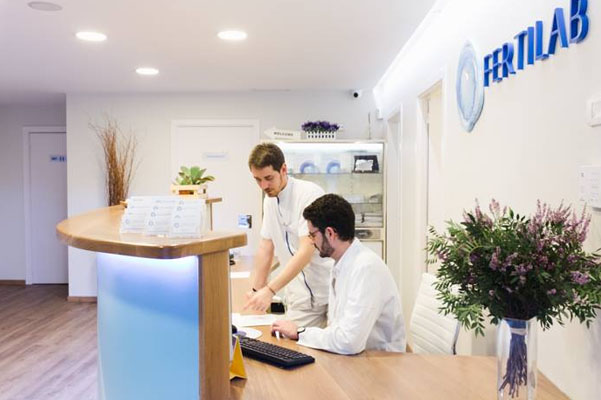
telemedicine it has become a fundamental part of the health sector in recent years, especially since the outbreak of the pandemic. The report “2021 Consumer Engagement in Health Care Survey» published by EBRI and Greenwald Research states that of all clients who have used telemedicinea total of 77% are satisfied.
In the Spanish sphere, 62% of patients have participated in teleconsultationsbecoming the country, of the eight analyzed, with the highest percentage of patients in consultations via telemedicine, followed by Canada (56%) and the United Kingdom (54%), according to the report Spain exceeds the international average in the use of telemedicine of Capterra. In contrast, the territories that have used this technology the least in the last year are Germany, Italy and France.
Within telemedicine, there are different specialties that benefit more than others, among which the Assisted reproduction. This alternative facilitates medical visits for both patients and doctors, allowing continuous monitoring of the fertilization treatment from anywhere in the world.
However, there are difficulties that must be faced in the virtual world, such as the coldness of the screen. Within the framework of the event ‘Telemedicine: The future of personalized assisted reproduction’, organized by Fertilab Barcelona, which included the participation of experts in assisted reproduction, telemedicine, artificial intelligence and reproductive genetics, as well as representatives of associations of new models of family, Marta Antich, founder of Fertilab, assured that “It is necessary to help all professionals to improve communication, doing workshops and teambuildings to improve empathy”. The assisted reproduction clinic Fertilab Barcelonaputs the focus on work the doctor-patient relationshipsince after a screen empathic communication can be lost.
Furthermore, with the help of artificial intelligence and big data, the monitoring, diagnosis and treatment of patients becomes more efficient. Among the main benefits are: the reduction of expenses, the analysis of results at any time and the best distribution of medical personnel. Secondly, heTelemedicine reduces malpractice, since all processes are recorded and can be reviewed. Dr. Rafael Gotsens, Teladoc international medical director, revealed at the event under the theme ‘Telemedicine: The future of personalized assisted reproduction’, that “In general, we have very few claims for malpractice, there are more for technical problems than merely related to the medical act.”
Benefits in assisted reproduction
Telemedicine has evolved over the years and has changed the entire industry, beyond reducing costs and improving the quality of life for many patients. For this reason, Fertilab Barcelona presents the five benefits to incorporate telemedicine in the future of assisted reproduction.
- Daily monitoring of the patient. Apps are the latest innovation that allow you to track patient care. These apps have made it possible to increase the continuity of treatments, as well as reduce errors based on the administration of medications. Doctor Alejandro Adalpe, Medical Director of SIMS-IVF, highlights that “Online response time is 13 minutes, while on the phone it is 22 minutes.”
- Improve decision resolution. The software that is used to process the medical data helps to make a more appropriate decision. In fact, the use of Artificial Intelligence significantly reduces failures. Adriana Brualla, Director of Fairtility Embryology, assures that “There are errors that can be avoided and thanks to the computer, 95% were eliminated”.
- Strengthen collaboration. Technology offers the opportunity to hold meetings with the medical team from anywhere, in addition to connecting with specialists from different fields. In addition, as a patient, it is possible to access various medical specialties that are not physically located in the same place.
- Accessibility from anywhere. Patients do not have to travel a long way to connect or interrupt what they are doing. You only need a computer to attend a visit. In fact, 70% of Fertilab’s patients are foreigners and attend routine follow-up through personalized telemedicine.
- Optimization of the time invested. Assistance is faster and more direct, thus reducing waiting time. However, César Arjona, director and co-founder of PersonAlGeneTiCs, explains that “We have to focus on personalized medicine for the patients themselves and the centers, to have that flexibility and adaptability to provide a complete and global service”.



